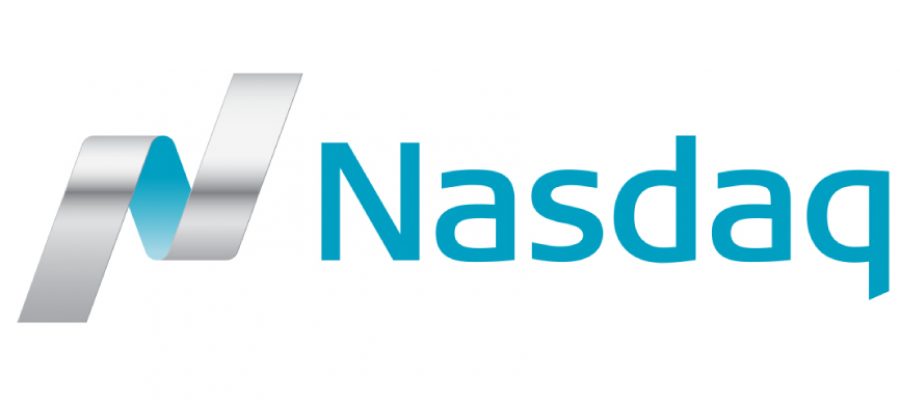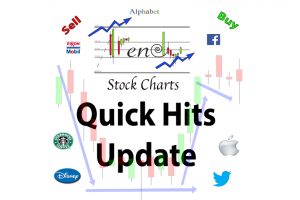Unfortunately, I do not have all my previous NASDAQ Composite articles available to view due to my website transfer. I am still in the process of copying and pasting, 1 by 1, my old articles and content. But I do have last month’s article. In last month’s article for the NASDAQ Composite titled “NASDAQ 8/31/2016 – Making New All-Time Highs“, I illustrated how I thought the NASDAQ Composite’s bull market was going to end. This was through the probable development of an Ending Diagonal Wave Pattern.
While my thoughts on the rate increases in the above article were not correct, the NASDAQ Composite’s Ending Diagonal wave pattern remains intact. Let’s review some updated charts and get a progress report this potential rally-ending wave pattern that appears to be developing.
NASDAQ Composite Elliott Wave Update
This is a 2 year weekly chart for the NASDAQ Composite. The chart covers a 2 year period because that is the time frame where I can best illustrate the NASDAQ’s potential Ending Diagonal wave pattern.
Based on the subsequent activity from the last couple of weeks, I think a downwards revision of the 5,800 price target is needed. I mentioned in the previous update that I thought a lower target was starting to develop. It definitely appears that way now. The 5,550 level I imagine is going to offer some pretty stiff resistance.
The 100% Target Line at the 5,500 target level is from a Fibonacci Extension Tool whose first anchor point is at 690.95 on June 22, 1994. That 100% Target Line is from a Fibonacci Extension Tool whose first anchor point was more than 20 years ago! My charting history only goes back 20 years. That Fibonacci Extension Tool must have been placed at least 3 years ago before the place for Anchor Point #1 fell out of view on my chart.
I have a feeling that the 5,550 level will be the ultimate top for the short-term. Let’s review some of the details of the NASDAQ Composite’s Ending Diagonal wave pattern to watch out for over the coming weeks.
Ending Diagonal Wave Pattern
An Ending Diagonal wave pattern is very similar to an Impulse wave pattern. Both of these patterns are used to advance prices in the general direction of the market.
However there is one main difference between the 2 patterns. The main difference is the Wave 4 pullback. In an Ending Diagonal wave pattern, Wave 4 actually enters into the price territory of Wave 1, as I’ve illustrated below. For an Impulse wave pattern, Wave 4 does not enter into the price territory of Wave 1.
Over the last couple of years, I have written more articles about Impulse waves than Ending Diagonal waves. This is because Diagonal wave patterns are commonly seen at the beginning and end of larger 8 wave cycles. Since the NASDAQ is in a 7 year bull market, I would say we are near the end of the current 8 wave cycle. Due to the bull market, I haven’t had to write about this pattern much before. There may have been an handful of stock articles over the last 4 years where I have mentioned this pattern, and most times it was for an individual stock.
Since the market appears to be finally nearing the end of its current 8 wave cycle, a lengthy consolidation period is most likely next. This consolidation period may take place over the next 2-3 years. It could take a while to correct a 7 year uptrend. Just like it has taken Sirius XM Holdings a while to go anywhere after its remarkable run. Any sort of length uptrend simply needs time to correct and consolidate.
What could a long consolidation period mean for the markets? It could mean a lot of upcoming volatility for the markets, more than we have seen as of lately.
NASDAQ Composite – Summary
So if the NASDAQ Composite’s Ending Diagonal wave pattern is truly forming, the current pullback needs to continue until it has broken into the price territory of Wave 1. That means the NASDAQ should drop below the 5,000 mark before rebounding to make new all-time highs. The revised upside price target for the NASDAQ Composite is the 5,550 area.
During this current pullback, which is Wave 4 of the Ending Diagonal wave pattern, the NASDAQ should stop and reverse somewhere in between Waves 1 and 2.
If the current pullback progresses as illustrated, you will definitely want to be raising cash during the next rebound as the market pushes towards fresh all-time highs during Wave 5. Those new highs will most likely be the end of the current bull market though. The end of the market may not give an exact clue at the time. But after a new 52 week high as I’ve mentioned above, investment risk in the market will be a lot higher than it has been at any time over the last 7 years.
Maybe the market correction begins with a “sector rotation” as the market analysts like to call them. Or maybe it begins with some “black swan” event. Any way you look at it, when a 7 year bull market ends, there won’t be many places to hide. Some stocks will hold up better than others during a correction. Say hello to volatility. Stay diligent my friends.


















Ask a Question. Make a Comment. Leave a Reply.